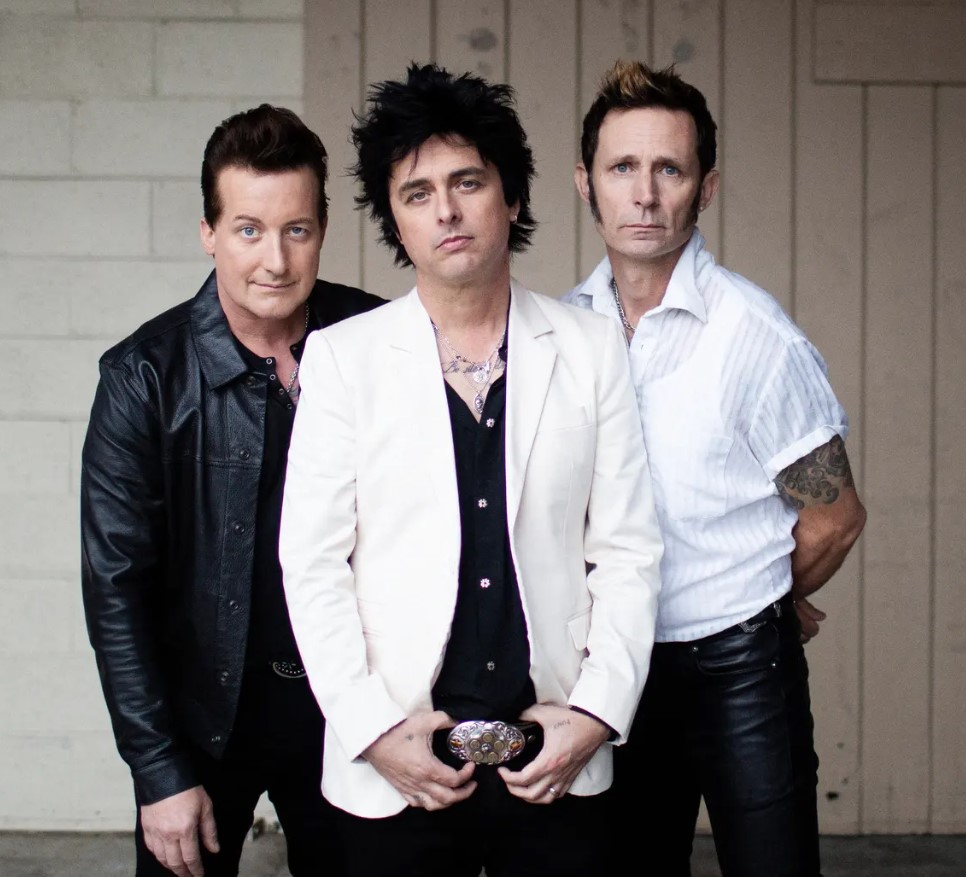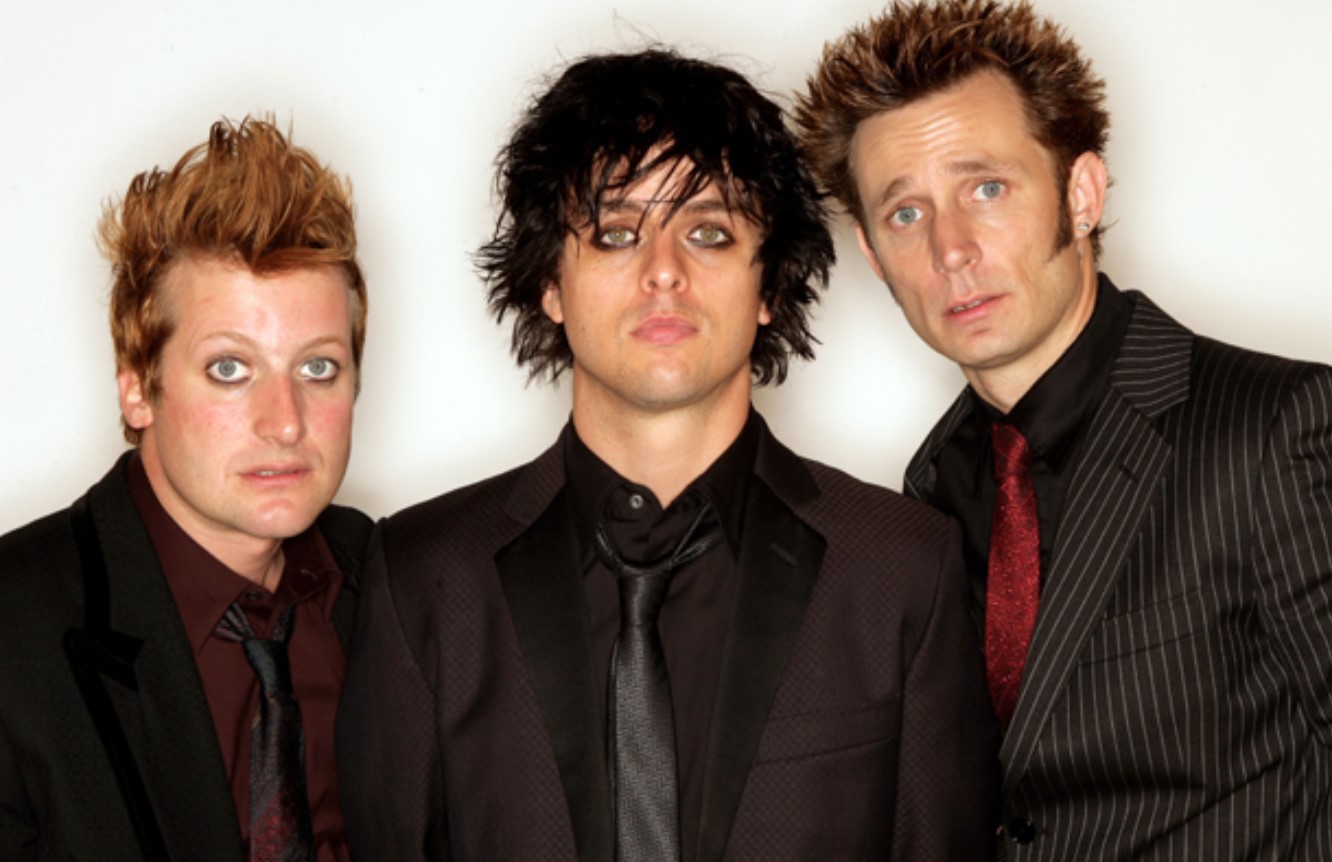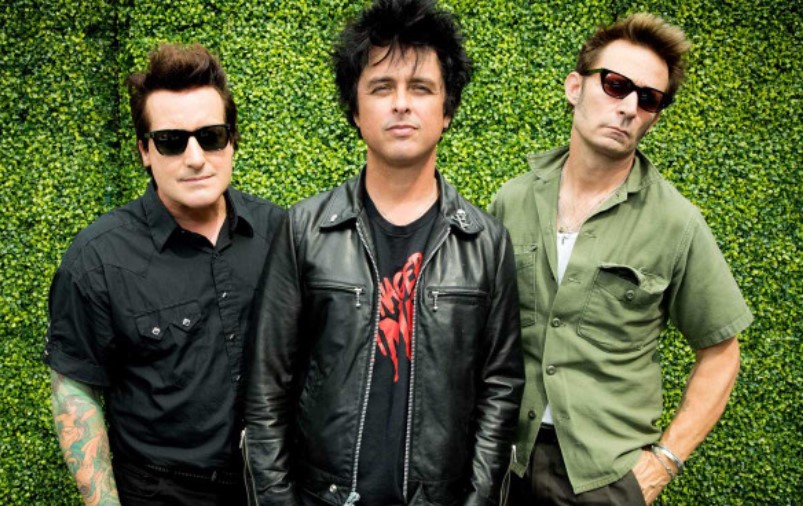Are you a fan of Green Day? Are you browsing on google or bing for How to contact Green Day? What is the Phone number, Whatsapp number, or mailing id of Green Day? What is the house address and office address of Green Day? Are you searching the Green Day Facetime, Fb, Twitter, or Insta id of Green Day? let’s check out these details in our article below.

Green Day Phone Number, Office Address, Email, Biography, Wiki, Whatsapp, and Contact Information
 Green Day is a band from the United States (formed 1987) Green Day is an American punk rock band that has achieved worldwide acclaim since the release of their debut major-label album, Dookie, in 1994.
Green Day is a band from the United States (formed 1987) Green Day is an American punk rock band that has achieved worldwide acclaim since the release of their debut major-label album, Dookie, in 1994.
Billie Joe Armstrong and Mike Dirnt formed a band called Sweet Children when they were teenagers. The band’s debut gig occurred in Vallejo, California, in October 1987, at Rod’s Hickory Pit, where Mike’s mother worked. The band began working with John Kiffmeyer the next year, who not only played drums but also booked performances for them. Green Day was formed in 1989, and their debut EP, ‘1,000 Hours,’ was published on Lookout! Records in 1989.
Green Day’s debut album, 39/Smooth, as well as two more EPs, ‘Slappy’ and ‘Sweet Children,’ were released by Lookout! Records in 1990. The next year, they released 1,039/Smoothed Out Slappy Hours, a hybrid of the debut EP and first LP. Sobrante, the band’s drummer at the time, left to attend college, and Tré Cool took his position.Kerplunk, Green Day’s second album, sold over 50,000 copies in the United States, which was a huge number for an underground punk band at the time.
Green Day’s Major Label Debut: In 1994, Green Day signed with Reprise Records and recorded their major label debut, Dookie. The band was added to the Lollapalooza and Woodstock lineups after the tracks ‘Basket Case,’ ‘Longview,’ and ‘When I Come Around’ gained substantial MTV rotation. In 1995, Dookie was awarded the Grammy Award for Best Alternative Album.
‘Geek Stink Breath,’ ‘Brain Stew/Jaded,’ ‘Walking Contradiction,’ and ‘Stuck With Me’ are among the hits from Insomniac, which was released in 1995. In 1996, the video for ‘Walking Contradiction’ won the Grammy Award for ‘Best Video, Short Form.’ Due to weariness, the band cancelled a European tour in 1996.

Nimrod, which was released in 1997, was a departure from the band’s usual punk-pop fare. The album debuted at number 10 in the United States, and the band won an MTV Award for Best Alternative Video for the track “Good Riddance (Time of Your Life).” The song was included in two different episodes of E.R.
In the year 2000, the film Warning was released. The band’s single ‘Minority’ was a hit, as was the title track to a lesser extent. Warning was certified gold, despite the fact that the band’s prior albums had all been certified double platinum at this time in their career. Billie Joe Armstrong (born February 17, 1972 in Rodeo, California, United States), Mike Dirnt (born May 4, 1972 in Berkeley), and Tré Cool were the band’s main members (byname of Frank Edwin Wright III, b. December 9, 1972, Willits, California). Al Sobrante was one of the other members (byname of John Kiffmeyer).
Armstrong and Dirnt met in elementary school in Crockett, California, and became friends because of their shared appreciation of vintage punk bands like the Ramones and the Dead Kennedys. Sweet Children, their first band, was formed in 1987 by them and drummer Sean Hughes. Hughes was eventually replaced by Sobrante, a member of the local Isocracy group. In the San Francisco Bay area, Sweet Children became a successful live act. The band recorded 39/Smooth in 1989, which was released by local label Lookout Records under the new band name Green Day (it was eventually repackaged as part of the band’s 1991 release, 1,039/Smoothed Out Slappy Hours). Soon after, Sobrante was replaced by Tré Cool, a drummer from the Mendocino Mountains who had been in the punk band the Lookouts since he was 12 years old.
In 2009, a rock opera based on the album was staged in Berkeley, California, utilising music from the album. The musical American Idiot made a triumphant return to Broadway the following year, receiving wonderful reviews and two Tony Awards for scenic design and lighting design of a musical. It depicted the dead-end efforts of a trio of youngsters to escape the normal life of their parents’ suburb. The Broadway cast recording was also nominated for a Grammy in 2011.
Green Day won a Grammy Award for Best Rock Album for 21st Century Breakdown (2009), a song cycle that was also ambitious. It was followed in 2012 by a trilogy—Uno!, Dos!, and Tre!—that saw the band return to the high-energy immediacy of their punk roots while still drawing inspiration from their classic-rock forefathers. Revolution Radio (2016), Green Day’s next album, was a more focused return to basics. Throwback garage rock was featured on Father of All… (2020).

Green Day Biography/Wiki
People in bands play mostly woodwind, brass, and percussion instruments in music. This is not the case with the orchestra, which is made up of stringed instruments. The word “band” can be used in a lot of different ways, from the general to the very specific. For example, “dance band,” “jazz band,” and “harmonica band” all use the word “band.” “King’s band” is a term that was first used in England to refer to the group of 24 violins at the court of Charles II, who reigned from 1660 to 85. The group was based on the well-known string quartet by Louis XIV.
The wind, brass, and percussion group that is called a band came from 15th-century Germany, where groups of mostly oboes and bassoons were part of military life. Musicians from Germany joined groups from other countries. Wind bands spread to France and England and the New World in the end. As Turkish troops occupied large parts of eastern Europe at this point in time, band music that was called “Turkish,” or “Janissary,” music became popular across Europe. This style of band music was named after the elite troops who protected the Turkish sultans from 1400 to 1826. In the original, it was made by shrill flutes, large drums, jangling triangles, cymbals, and Turkish crescents (jingling Johnnies), as well as by black drummers who marched with their drumsticks in their hands like the later drum major. This was because people were becoming more interested in exoticism. In the second movement of Haydn’s Symphony No. 100 in G Major (The Military), he used Janissary music. Mozart used it in the “Rondo Alla Turca” movement of his Piano Sonata in A Major K. 331, and Beethoven used it in the music for The Ruins of Athens.
There were many more wind instruments by the end of the 18th century, mostly because of the large-scale outdoor ceremonies of the French Revolution, which had bands of as many as 2,000 musicians. It took a trumpet, two horns, two clarinets, two bassoons, and a serpent to play Haydn’s march music for the Derbyshire yeomanry (the wooden precursor of the tuba). In Berlin in 1838, 1,000 wind instruments and 200 drummers came together to play for the Russian emperor.
Toward the end of the 18th century, the brass band (sometimes called a “silver band,” because of the metal alloy used in many instruments) began to replace the bands of the town “waits” (public musicians) and the village churches. Companies in areas where there are a lot of factories encouraged bands to form. The development of the cornucopian, a precursor to the cornet, and a family of brass instruments with the same fingerings, invented by the French instrument builder Adolphe Sax, made it easier for amateurs to play brass instruments. In 1814, the Stalybridge Old Band and the Besses o’ the Barn were two of the first brass bands in the United Kingdom (all-brass by 1853). Groups were formed to represent towns, factories, social clubs, and religious groups like the Salvation Army. Contests, like at Belle Vue, Manchester, and Alexandra Palace, London, led to the National Brass Band Festival in 1900. Sir Edward Elgar, Sir Arthur Sullivan, Gustav Holst, and Benjamin Britten are some of the composers who have written band music. People usually played cornets, horns, B baritones, euphoniums, and basses in these kinds of songs. They were usually written for these instruments.
There were many professional bands in the United States, like the famous band of Patrick Sarsfield Gilmore (1829–92). They competed to find talented soloists. When Gilmore played music, he had a flair for showmanship. He was a big help in getting people to learn how to play well and play good music. “John Philip Sousa,” the bandmaster and composer behind marches like Semper Fidelis, Washington Post, and Stars and Stripes Forever, was the real successor to him. He was born in 1854, and he died in 1932. When Gilmore and Sousa did well, they made the art of the band better. This made band music, in a way, a kind of American music genre. It is still used in parades and in the extravaganzas that are part of the entertainment that comes with sports events. An American vocal group from the late 1940s to the early 50s called the Oriole was called that. They were Sonny Til, Alexander Sharp, George Nelson, Johnny Reed, Tommy Gaither, and Tommy Gaither. They were all born in Baltimore, Maryland, and died there, in Baltimore, or in Washington, D.C., or somewhere else in the United States.
The Orioles were formed in Baltimore in 1947, and they are often said to be the first vocal group to sing in the rhythm-and-blues (R&B) style. They did this by taking the popular vocal pop style of the Ink Spots and adding a more rhythmic and rocking style. Rhythm and blues music became more popular after vocal groups with bird names became popular.
In 1948, Arthur Godfrey’s TV show Talent Scouts featured a performance by the Orioles. This led to a recording deal for the band. Their first song, “It’s Too Soon to Know,” was a slow romantic ballad that launched their career. It went to number one on the rhythm and blues chart. Almost all of the group’s records were quiet ballads with heartfelt lead vocals by Til. The group sang soft choruses and almost no instrumentation was heard. For their most famous albums, they made Tell Me So (1949), Cry in Chapel (1953), and St. Augustine’s Mission (1956). (1953). In 1955, the group broke up. By then, they were almost forgotten as pioneers. When people in the future look back on the group, they will see them not only as pioneers in rhythm and blues but also as roots artists for rock and roll.

| Green Day Phone Address, Phone Number, Email ID, Website | |
|---|---|
| Email Address | NA |
| https://www.facebook.com/GreenDay | |
| Fanmail address (residence address) | Green Day Crush Music Media Management, Inc. 49 West 24th Street Floor 8 New York, NY 10010 USA |
| https://www.instagram.com/greenday/ | |
| Office Address | NA |
| Office Number | NA |
| Official Website | NA |
| Personal No. | NA |
| Phone Number | NA |
| Snapchat Id | NA |
| TikTok Id | NA |
| https://twitter.com/greenday?lang=en | |
| Whatsapp No. | NA |
Green Day Contact Detail
1. INSTAGRAM: https://www.instagram.com/greenday/
We have written their Instagram Profile username above and the given username or Id is accurate and confirmed by us and Instagram too. If you’d like to support them or want to follow them, you can also use the account name mentioned above.
2. YOUTUBE: https://www.youtube.com/watch?v=YTMJPyfhPeU
This is a YouTube channel under which they updated their video clips. If anyone wants to see their uploads and videos, they can use the username link which is given above.
3. FACEBOOK: https://www.facebook.com/GreenDay
Their Facebook ID also has been provided above. It is reviewed and we confirm that it is 100% Real Profile of the show. You can follow them on their Facebook profile and for that, you can follow the link above.
4. TWITTER: https://twitter.com/greenday?lang=en
We’ve provided their Twitter handle above, and the given Twitter Id is tested and authenticated by us. If you’d like to follow them on Twitter, you must use the link described above.
5. EMAIL: N/A
6. PHONE NUMBER
We couldn’t find any kind of phone number
7. Fanmail Address:
Green Day
Crush Music Media Management, Inc.
49 West 24th Street
Floor 8
New York, NY 10010
USA
Read also: Eliana Ghen Phone Number, Bio, Email ID, Autograph Address, Fanmail and Contact Details


